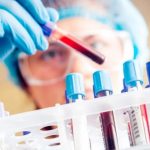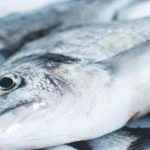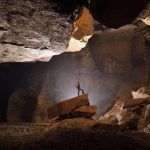 Technology
Technology  Technology
Technology  Humans
Humans 10 Everyday Human Behaviors That Are Actually Survival Instincts
 Animals
Animals 10 Animals That Humiliated and Harmed Historical Leaders
 History
History 10 Most Influential Protests in Modern History
 Creepy
Creepy 10 More Representations of Death from Myth, Legend, and Folktale
 Technology
Technology 10 Scientific Breakthroughs of 2025 That’ll Change Everything
 Our World
Our World 10 Ways Icelandic Culture Makes Other Countries Look Boring
 Misconceptions
Misconceptions 10 Common Misconceptions About the Victorian Era
 Mysteries
Mysteries 10 Strange Unexplained Mysteries of 2025
 Miscellaneous
Miscellaneous 10 of History’s Most Bell-Ringing Finishing Moves
 Technology
Technology Top 10 Everyday Tech Buzzwords That Hide a Darker Past
 Humans
Humans 10 Everyday Human Behaviors That Are Actually Survival Instincts
 Animals
Animals 10 Animals That Humiliated and Harmed Historical Leaders
Who's Behind Listverse?

Jamie Frater
Head Editor
Jamie founded Listverse due to an insatiable desire to share fascinating, obscure, and bizarre facts. He has been a guest speaker on numerous national radio and television stations and is a five time published author.
More About Us History
History 10 Most Influential Protests in Modern History
 Creepy
Creepy 10 More Representations of Death from Myth, Legend, and Folktale
 Technology
Technology 10 Scientific Breakthroughs of 2025 That’ll Change Everything
 Our World
Our World 10 Ways Icelandic Culture Makes Other Countries Look Boring
 Misconceptions
Misconceptions 10 Common Misconceptions About the Victorian Era
 Mysteries
Mysteries 10 Strange Unexplained Mysteries of 2025
 Miscellaneous
Miscellaneous 10 of History’s Most Bell-Ringing Finishing Moves
10 Amazing Innovative Uses of DNA
Most people probably think of deoxyribonucleic acid (DNA) simply as an organism’s hereditary blueprint—the chemical coding that directs their development and function. This molecule and its complex, double helix structure certainly provide such instructions, but DNA has also been put to innovative—and fascinating—uses outside biology. It can identify the long-lost ancestors of apple varieties, increase data storage far beyond the capacities of silicone microchips and magnetic hard drives, and produce and increase clean energy. These and other equally amazing innovative uses of DNA are the focus of this list.
Related: Top 10 Astounding Uses For Genetic Technology
10 Finding Lost Apple Varieties
Apple aficionados have found a new use for DNA. A BBC article notes that throughout the United Kingdom, they’re extracting samples from old apple trees, hoping to discover more of their favorite fruit’s “antique varieties.” Since most of today’s apples were produced from grafts of long-gone trees, the old varieties produced by these trees may no longer be available.
Members of the Marcher Apple Network keep in touch with one another about the results of their DNA searches. Their work sometimes ends in the identification of a vanished tree and its genealogy. This happened recently when it was found that Unknown Founder 8 was a Lemon Roy that produced “a cooking apple, best stewed or in a tart.” Occasionally, an entire orchard can help the group identify several types of apple trees that exist as descendants of now-long-gone trees.[1]
9 Data Storage
According to the BBC, “If stored as DNA, every film ever made could be stored in a space smaller than a sugar cube.” Kasra Tabatabaei, a Beckman Institute for Advanced Science and Technology researcher, would undoubtedly agree. Nature’s original storage system, DNA, is far superior to any storage system that technology can provide. It can be used to store virtually limitless quantities of any “kind of data: images, video, music—anything,” she says.
DNA strands contain four chemicals—adenine (A), guanine (G), cytosine (C), and thymine (T)—which can “arrange and rearrange themselves along [the molecule’s] double helix [structure] into combinations that scientists can decode, or sequence, to make meaning.” By adding seven chemically modified nucleotides to the mix, scientists can vastly multiply DNA’s storage capacity.
DNA also has the benefit of being a “secure, sustainable data lock box” that can withstand the planet’s harshest conditions for tens of thousands of years. Another boon is that it offers nearly infinite renewability, while today’s storage systems, mostly silicone microchips, end up in landfills within decades. Just as CDs replaced floppy discs, DNA storage will replace silicon microchips and magnetic storage drives.[2]
8 Energy Production
Among DNA’s other innovative applications is its use in energy production. As Suliman Khan and his coauthors highlight in an article in the International Journal of Gonmics, the potential of microorganisms like cyanobacteria and Geobacter sulfurreducens in renewable energy production. Cyanobacteria can produce hydrogen, a clean energy source, by using specific enzymes that drive the process. Advanced techniques such as genetic engineering, metabolic engineering, and optimizing growth conditions have improved hydrogen output in these microorganisms. By genetically altering cyanobacteria, scientists have enabled them to convert CO2 into fuel, which could reduce the harmful environmental effects of carbon-based energy sources.
Meanwhile, Geobacter sulfurreducens shows promise for bioelectronics and renewable energy due to its ability to form conductive biofilms. A genetic modification that removed the PilZ genes, which encode proteins, resulted in biofilms with enhanced conductivity. The modified biofilms grown on electrodes were six times more conductive than their natural counterparts, reducing energy losses in microbial fuel cells.
Such advancements suggest microorganisms could be key players in the future of clean energy technologies, offering alternatives to fossil fuels that are both environmentally friendly and more efficient.[8]
7 Archaeological Research
DNA has provided archaeologists with insights concerning rituals practiced by members of Chichén Itza, an important Mayan settlement of the Late and Terminal Classic periods (AD 600–1000) located on Mexico’s Yucatán Peninsula. Data provided by the genomes of 64 pre-adult individuals whose remains were located in an underground mass burial area near the Sacred Cenote (sinkhole) in the settlement’s ceremonial center revealed several surprising results. The dead were all male twins, two pairs were monozygotic twins, and all were otherwise close relatives.
Rodrigo Barquera and his coauthors concluded that the 64 boys were human sacrifices who were killed over a 500-year period, their subterranean burial place representing an entrance to the underworld and the twins possibly recalling “rituals involving [their culture’s] Hero Twins,” Hunapu and Xbalanquem. These two “avenge their father and uncle,” whom the gods previously sacrificed, by undergoing repeated cycles of sacrifice and resurrection to outwit the gods of the underworld.[4]
6 Evolution Evidence
DNA supports the theory of evolution in numerous ways. Genome sequences span across various species, which indicate the species’ origins from common ancestors (comparative genomics). Molecular similarities exist across species (molecular homology), and nonfunctional DNA segments can resemble functional genes (pseudogenes). In addition, fossils exhibiting traits can be shared by ancestral and descendant groups (transitional fossils). The ability to discern the prehistoric time at which biomolecular mutations allowed multiple life forms to diverge (molecular clock). There is also the existence of nonfunctional but persistent cells, tissues, and organs (vestigial structures). Finally, relationships among embryos suggest common relationships (comparative embryology).
Scientists’ abilities to identify similarities between species, track genetic changes over time, and establish evolutionary relationships that support the theory of evolution by the comparison of DNA sequences also provide evidence in support of the theory of evolution. Through such verification, the theory, which largely forms the basis of biological and life sciences, is validated.[5]
5 Genealogical Research
Genealogical research has become increasingly important to many who are interested in generating their family trees and tracing their family histories. Various biological materials can be used as DNA sources, including sweat, skin, blood, tissue, hair, dandruff, mucus, semen, saliva, and vaginal or rectal cells. The purpose of the test, in part, often helps to determine the material to be used.
The conclusions of genealogical research based on DNA, which will most likely involve the analysis of a saliva sample, must be taken with a grain of salt, as Kelly Brown cautions the readers of her “Know Your DNA” article. As is true with any other type of DNA test, whether forensic, paternity, medical or health, or genealogical, not every result should be accepted at face value, as “many DNA testing services make educated, scientific guesses about origins based on the results already in their database.”[6]
4 Customized Dieting
DNA has opened exciting possibilities for dieters: customized diets and exercise. As dietitian Kristin Kirkpatrick points out in her Today article, “Genetic analysis is contributing to a growing area of nutritional medicine that offers dietary prescriptions—including personalized diet plans based on nutrigenomics,” the study of genome-diet interaction and its effects on health.
According to Dr. Lu Qi, an adjunct professor of nutrition, this personalized approach may make dietary guidance more effective by pinpointing individuals’ food intolerances and susceptibility to diseases, preliminary research suggests. One of the results of the Human Genome Project, the emergence of nutrigenomics, provided scientists with new insights into foods’ bioactive compounds (substances that affect living tissues) and their influences on genes. As yet, though, no verdict has been reached as to whether or how effective customized diets based on nutrigenomics might turn out to be. Research results are mixed, and more studies are needed.[7]
3 Rodent Control
One hope for better rodent control is the possibility of tinkering with rats’ genes so that the rodents would produce only male offspring, leading to their extinction. Maybe interference with the animals’ ribonucleic acid (RNA) would do the trick. There is an array of techniques, according to the U.S. Department of Agriculture, by which to “modify, suppress, and detect organisms at the molecular level.”
Clustered regularly interspaced palindromic repeats/Cas9 (CRISPR/Cas9) gene-editing technology gives researchers tools that Victor Frankenstein never imagined, allowing them “to correct errors in the genome and turn on or off genes in cells and organisms quickly, cheaply and with relative ease.” The technology has many possible uses, including repairing defective DNA, thereby curing genetic disorders (at least in mice and human embryos), and treating infectious, malignant, and other diseases. If the U.S. Department of Agriculture has its way, it could drive rats to extinction in a generation or two.[8]
2 Veterinary Health
Pet owners who want to verify their dogs’ breeds can do just that at home or by having their veterinarians administer a DNA test. The results will even identify the specific breeds that contributed to their animals’ unique features, as well as the dogs’ health. If a dog’s genetic makeup makes them susceptible to a specific disease, the test will show this disposition.
A caution is in order, though: the test is not yet a perfect indicator that a dog will develop a disease. It’s critical to understand that a “positive test result on a genetic test does not necessarily mean that [a] dog is going to develop a particular disease.” Instead, a positive indication probably indicates the need to make an appointment with one’s veterinarian.[9]
1 Airborne Disease Detection
The headline for Laura Foster’s BBC News report summarizes her article nicely: “Testing DNA in the air may make food cheaper.” The Earlham Institute in Norwich uses sampling processes that detect bacteria, viruses, and other microorganisms that endanger both plants and animals, humans included. These procedures are both faster and more accurate than other approaches. The shedding of organisms’ DNA into their habitats very quickly provides scientists with clues as to the species that live there or when they lived there, allowing researchers to profile them. Farmers can also target the specific pathogen or pathogens peculiar to their farms’ particular locations.
There would be no need to buy more than the necessary number of chemical sprays, and farmers, merchants, and restaurant owners could pass on their savings to their buyers, customers, and diners in the form of lower food prices.[10]








